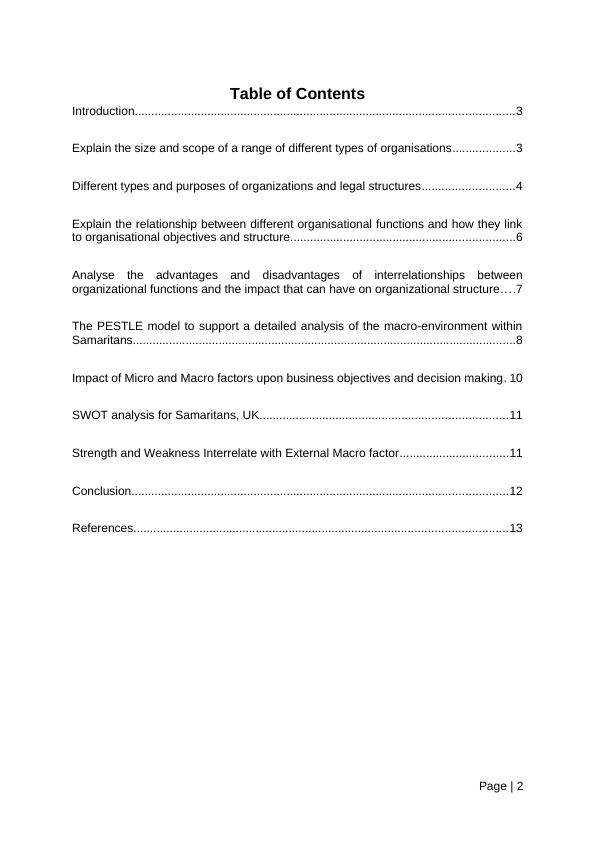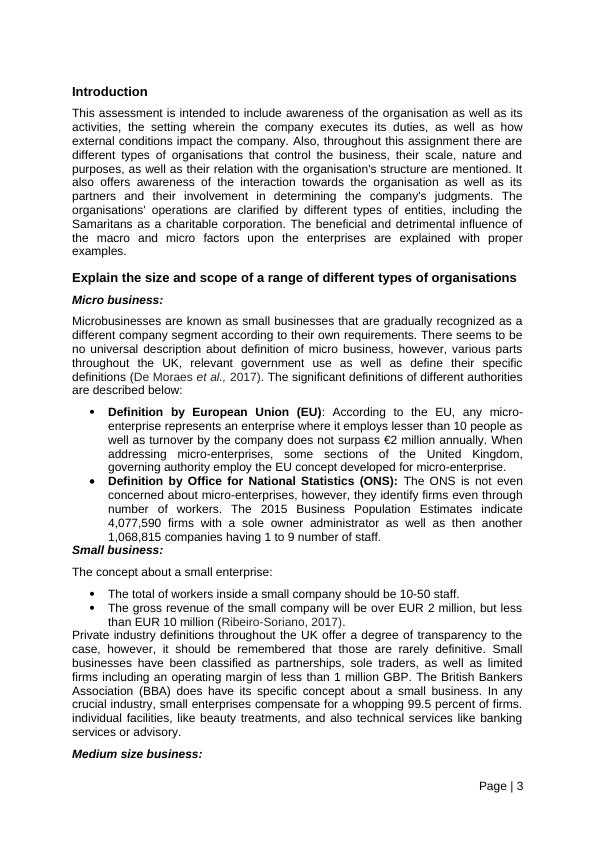Ask a question from expert
BUSINESS AND BUSINESS ENVIRONMENT UNIT 1: BUSINESS AND BUSINESS ENVIRONMENT
14 Pages5898 Words75 Views
Added on 2020-11-30
About This Document
HA82854 UNIT 1 - BUSINESS AND BUSINESS ENVIRONMENT Introduction 3 Explain the size and scope of a range of different types of organisations 3 Different types and purposes of organizations and legal structures 4 Explain the relationship between different organisational functions and how they link to organisational objectives and structure 6 Analyse the advantages and disadvantages of interrelationships between organizational functions and the impact that can have on organizational structure 7 The PESTLE model to support a detailed analysis of the macro-environment within Samaritans 8 Impact of Micro
BUSINESS AND BUSINESS ENVIRONMENT UNIT 1: BUSINESS AND BUSINESS ENVIRONMENT
Added on 2020-11-30
BookmarkShareRelated Documents
End of preview
Want to access all the pages? Upload your documents or become a member.
Business Environment Assignment : Unilever
|17
|5535
|138
Types of Business Organizations on the Basis of Size, Scope, and Organizational Structure
|11
|2541
|166
Different Types of Companies and Organizational Structures
|12
|2497
|66
Different Types of Business Organisations and Their Impact on Business Performance
|11
|2905
|90
Impact of Business Environment on Marks & Spencer
|9
|2668
|343
Business and Business Environment
|2
|1976
|189



